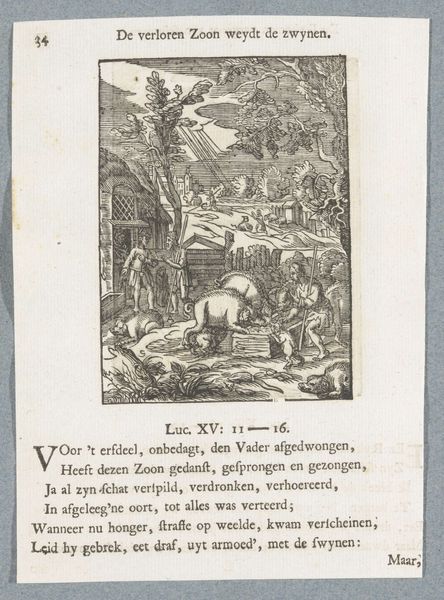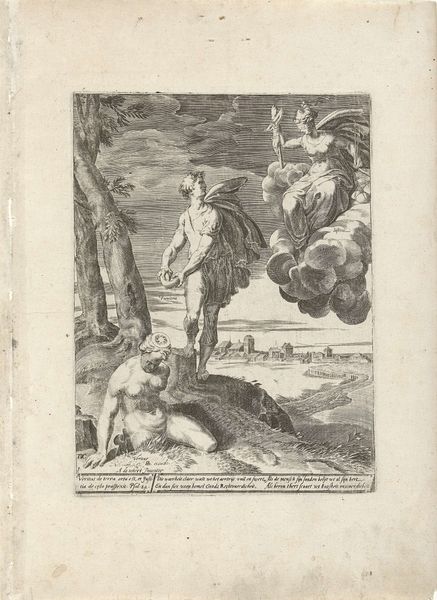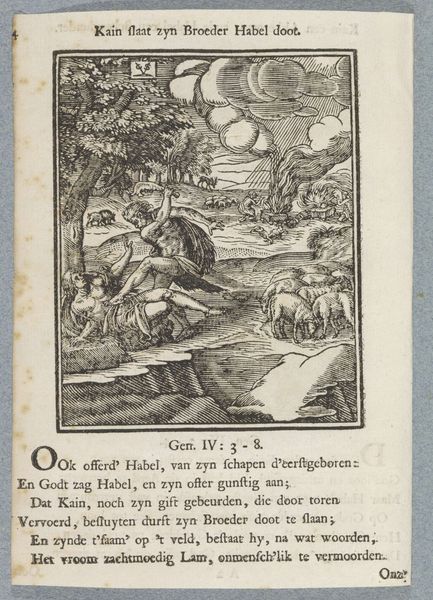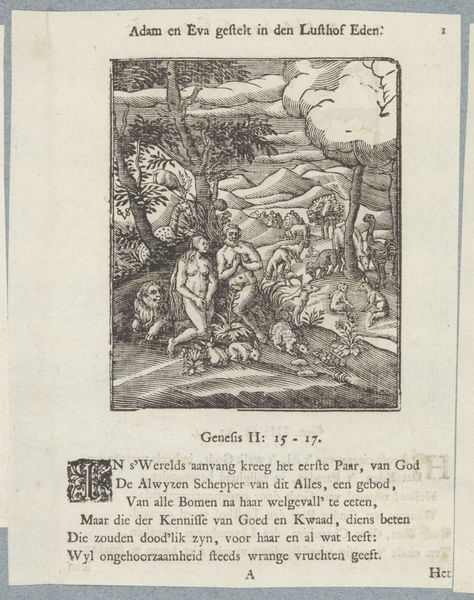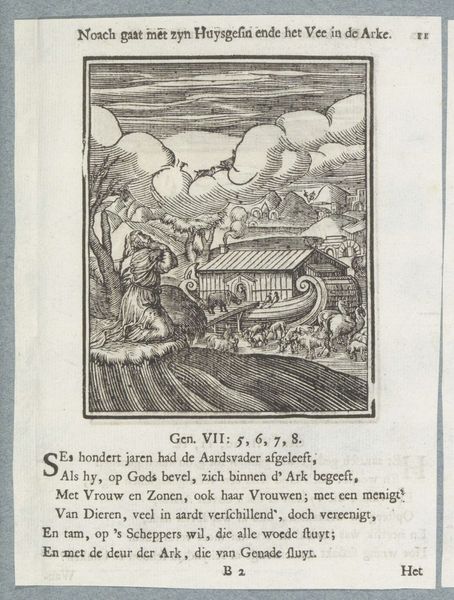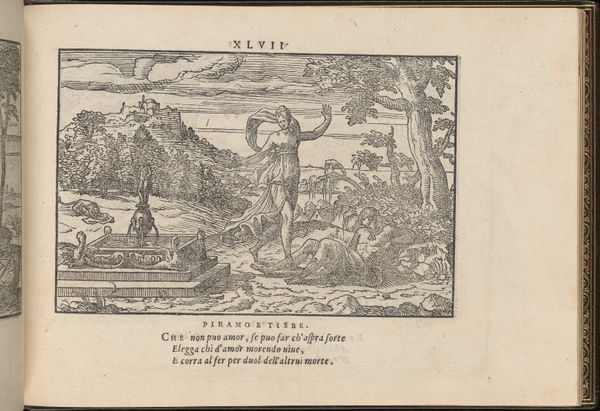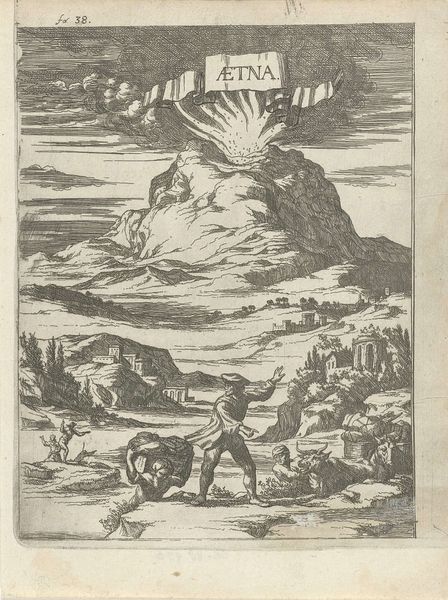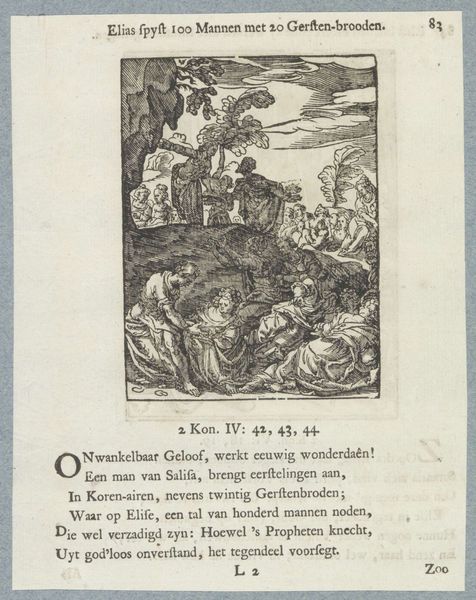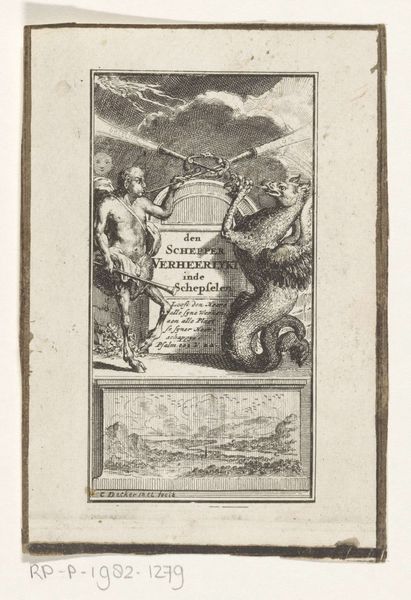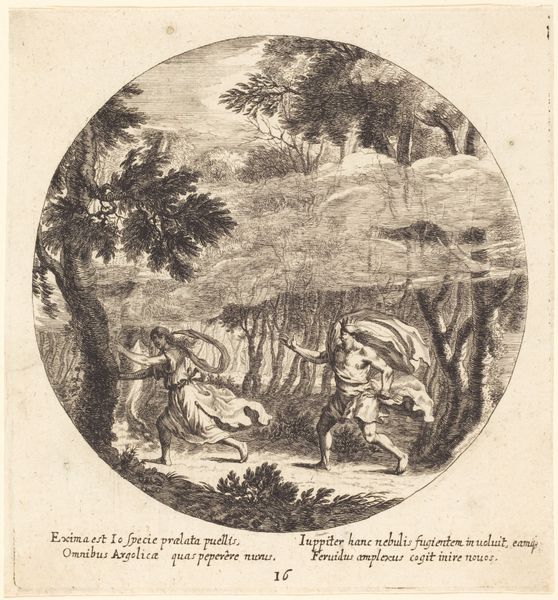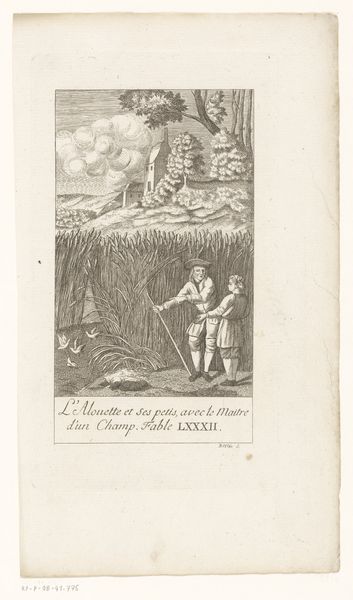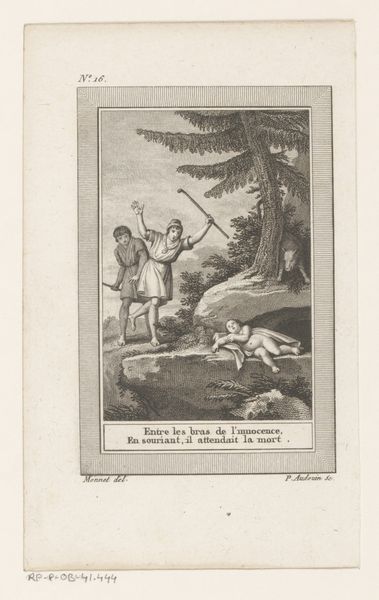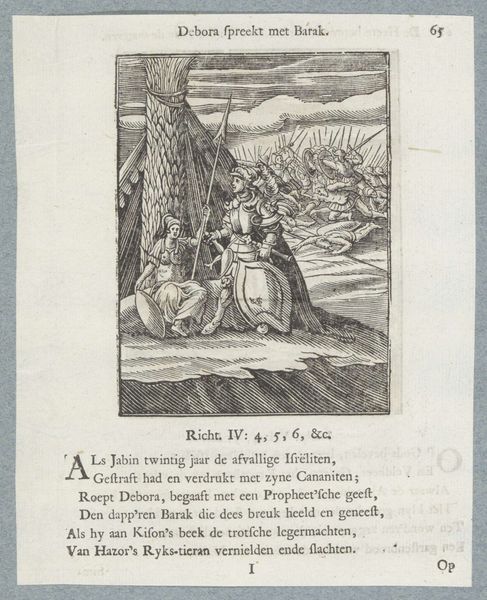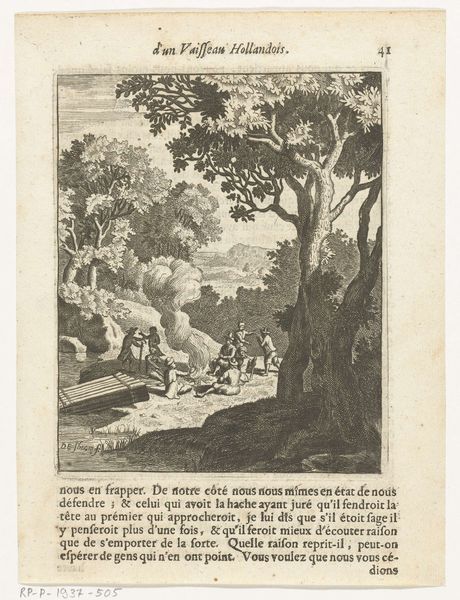
print, etching
#
dutch-golden-age
# print
#
etching
#
landscape
#
genre-painting
Dimensions: height 83 mm, width 68 mm
Copyright: Rijks Museum: Open Domain
Editor: This is "Landschap met honden," or "Landscape with Dogs," an etching by Albert Flamen from 1672. The etching feels very detailed, especially given its scale. It seems to show dogs in a field, perhaps hunting. What do you see in this print? Curator: Well, focusing on the material, it’s fascinating how Flamen employed the etching process to depict this scene. Consider the physical labor involved in creating the plate. Each line, each tone, had to be carefully etched using acid. The matrix itself would likely have been copper, relatively inexpensive at the time and also reusable. How do you think this impacted the imagery chosen and its potential reception? Editor: So, the medium allowed for reproducibility, making it more accessible? Curator: Precisely. Think about the social context. This isn’t a unique painting commissioned by the wealthy, it's a print. The means of production determine who can afford it and where it circulates. Etchings like these helped spread landscapes as a genre, shaping ideas about nature and leisure. Are the dogs purely decorative, or are they symbols of status? Editor: I hadn’t thought about that, but their presence changes the meaning of the landscape itself! It points to wealth and control over nature. So, reading the imagery, even down to its texture, is linked to the physical process and the world outside the artwork. Curator: Absolutely. Flamen’s choice of materials and methods were inseparable from the subject and the message. How fascinating! Editor: Definitely, looking at art through a materialist lens opens up new levels of appreciation for what we can learn from it!
Comments
No comments
Be the first to comment and join the conversation on the ultimate creative platform.
